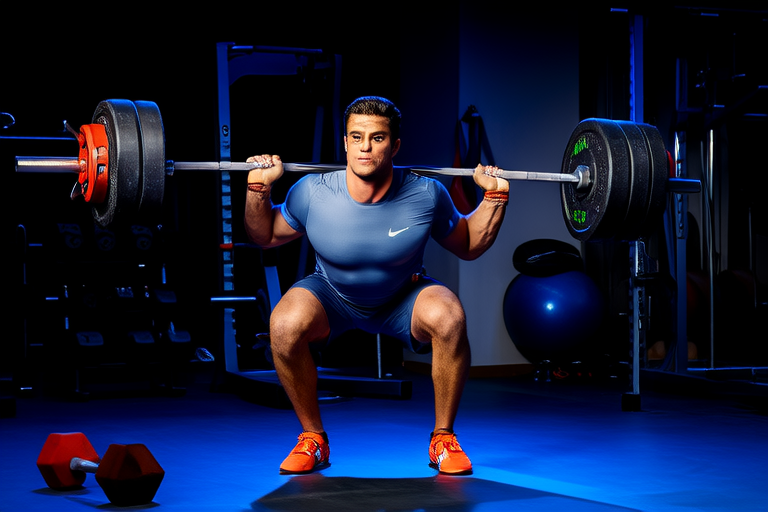Maximizing Performance: The Science of Sports and Essential Precautions for Athletes
Athletic performance is a complex interplay of physical, mental, and environmental factors. To achieve peak performance, athletes must understand the scientific principles that govern their bodies and adopt strategies to optimize their health and well-being. This article delves into the science behind athletic performance, focusing on nutrition, hydration, sleep, training techniques, and injury prevention. It also provides practical advice on maintaining mental health and ensuring long-term success in sports.
The Role of Nutrition in Athletic Performance
Nutrition is the cornerstone of athletic performance. The body requires a balanced intake of macronutrients—carbohydrates, proteins, and fats—to fuel energy production, muscle repair, and overall function. Carbohydrates serve as the primary energy source, especially during high-intensity activities, while proteins are essential for muscle recovery and growth. Fats play a critical role in supporting cellular function and providing sustained energy during endurance events.
Athletes should tailor their diets based on the demands of their sport. For instance, endurance athletes may benefit from a higher carbohydrate intake to maintain glycogen stores, while strength athletes might prioritize protein to support muscle hypertrophy. Micronutrients such as vitamins and minerals are equally important, as they facilitate metabolic processes and protect against oxidative stress.
Timing is another crucial aspect of nutrition. Consuming a balanced meal 2-3 hours before exercise ensures adequate energy availability, while post-workout meals rich in protein and carbohydrates aid recovery. Hydration, discussed in the next section, complements nutrition by ensuring optimal nutrient transport and metabolic efficiency.
Hydration: The Foundation of Physical Endurance
Water is vital for nearly every physiological process, including temperature regulation, joint lubrication, and nutrient delivery. Dehydration, even at mild levels, can impair performance by reducing endurance, increasing fatigue, and compromising cognitive function.
Athletes should adopt personalized hydration strategies based on factors such as sweat rate, environmental conditions, and exercise intensity. Drinking water before, during, and after workouts helps maintain fluid balance, while electrolyte-rich beverages can replenish sodium, potassium, and magnesium lost through sweat.
Monitoring urine color is a simple yet effective way to assess hydration status. Pale yellow urine generally indicates proper hydration, while darker shades suggest the need for increased fluid intake. Avoiding excessive caffeine and alcohol consumption is also advisable, as these substances can contribute to dehydration.
Sleep: The Underrated Performance Enhancer
Sleep is often overlooked in athletic training, yet it plays a pivotal role in recovery and performance optimization. During sleep, the body undergoes critical processes such as muscle repair, hormone regulation, and memory consolidation. Chronic sleep deprivation can lead to decreased reaction times, impaired decision-making, and an elevated risk of injury.
Athletes should aim for 7-9 hours of quality sleep per night. Establishing a consistent sleep schedule, creating a restful environment, and avoiding screens before bedtime can enhance sleep quality. Napping strategically—ideally for 20-30 minutes—can also provide a midday boost without interfering with nighttime sleep.
For athletes traveling across time zones or competing late at night, managing circadian rhythms becomes essential. Techniques such as gradual time adjustments and exposure to natural light can help mitigate the effects of jet lag and irregular schedules.
Training Techniques: Balancing Intensity and Recovery
Effective training programs strike a balance between intensity and recovery. Overtraining can lead to burnout, diminished performance, and increased injury risk, while insufficient training may fail to elicit meaningful adaptations. Periodization—a systematic approach to varying workout intensity and volume—is a proven method for optimizing progress.
Strength training enhances power and resilience, making it indispensable for athletes across disciplines. Incorporating exercises that target major muscle groups and mimic sport-specific movements can improve functional performance. Flexibility and mobility work, such as dynamic stretching and yoga, complement strength training by enhancing range of motion and reducing stiffness.
Cardiovascular conditioning is equally important, particularly for endurance athletes. Interval training, which alternates between high-intensity bursts and recovery periods, is an efficient way to build aerobic capacity and anaerobic tolerance. Cross-training, or engaging in diverse activities, can prevent overuse injuries and maintain motivation.
Injury Prevention: Staying Ahead of the Game
Injuries are an unfortunate reality in sports, but many can be prevented with proactive measures. Proper warm-ups and cool-downs prepare the body for physical exertion and facilitate recovery. Dynamic stretches, such as leg swings and arm circles, increase blood flow and reduce the likelihood of strains.
Using appropriate equipment and footwear tailored to the athlete’s sport and biomechanics is crucial. Regularly inspecting gear for wear and tear ensures safety during training and competition. Additionally, adhering to correct technique minimizes stress on joints and muscles, reducing the risk of overuse injuries.
Listening to the body is perhaps the most important precaution. Pain or discomfort should not be ignored, as it may signal an underlying issue. Seeking prompt medical attention for persistent symptoms can prevent minor problems from escalating into serious injuries.
Recovery Strategies: Building Resilience
Recovery is as integral to athletic success as training itself. Active recovery, such as light jogging or swimming, promotes circulation and accelerates muscle repair. Contrast therapy, which involves alternating between hot and cold treatments, can reduce inflammation and alleviate soreness.
Muscle recovery tools like foam rollers and massage guns help release tension and improve tissue elasticity. Compression garments, meanwhile, enhance blood flow and reduce swelling. Adequate nutrition and hydration further support recovery by replenishing depleted resources and facilitating cellular repair.
Mental recovery is equally important. Engaging in hobbies, spending time with loved ones, and practicing mindfulness can alleviate stress and foster a positive mindset. Journaling or reflecting on achievements and challenges can also enhance self-awareness and motivation.
Mental Health Management: The Inner Game
Athletic performance is not solely determined by physical prowess; mental resilience is equally vital. Stress, anxiety, and pressure can undermine confidence and focus, leading to suboptimal outcomes. Developing mental toughness involves cultivating self-belief, emotional regulation, and adaptability.
Visualization techniques, where athletes mentally rehearse successful performances, can enhance confidence and preparedness. Goal setting, both short-term and long-term, provides direction and motivation. Breaking larger objectives into manageable steps ensures steady progress and reduces overwhelm.
Seeking support from coaches, teammates, or mental health professionals can address challenges and promote well-being. Open communication fosters a sense of community and shared purpose, reinforcing the athlete’s commitment to their goals.
Conclusion
Maximizing athletic performance requires a holistic approach that integrates nutrition, hydration, sleep, training, and mental health management. By understanding the science behind these elements and adopting practical precautions, athletes can optimize their potential while minimizing the risk of injury. Prioritizing recovery and fostering resilience further ensure long-term success in sports. Ultimately, the journey to excellence is not just about physical achievement but also about nurturing a balanced and sustainable lifestyle.










